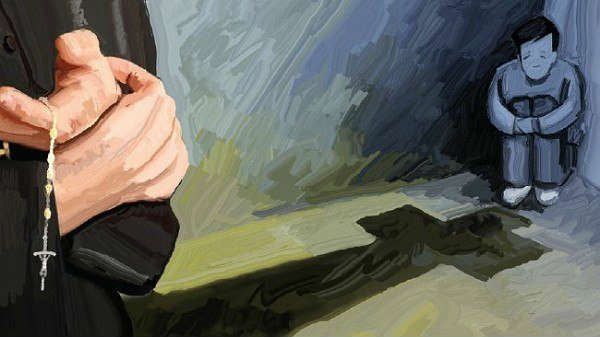
More than 300 “predator priests” were found to have committed sexual abuse in Pennsylvania, harming more than 1,000 children, according to a grand jury report released by the state supreme court on Tuesday.
The near-900-page report is the result of one of the largest US investigations into sexual abuse in the Catholic church. In painful detail, it showcases how for decades one of the most powerful churches in the world hid the abuse and suffering of children.
“There have been other reports about child sex abuse within the Catholic church,” the report said. “But never on this scale. For many of us, those earlier stories happened someplace else, someplace away. Now we know the truth: it happened everywhere.”
The incidents described include a priest who impregnated a minor and helped her get an abortion, then was allowed to stay in the ministry; a priest who confessed to the oral and anal rape of at least 15 boys, including one as young as seven; and a priest who collected the urine, pubic hair and menstrual blood of girls he abused in his home.
The report said “almost every instance of abuse” was too old to be prosecuted, though two priests were identified and charged because of the report, including one who sexually assaulted two children monthly for several years until 2010.
“We know that child abuse in the church has not yet disappeared because we are charging two priests, in two different dioceses, with crimes that fall within the statute of limitations,” the report said.
Twenty-three grand jurors – including practicing Catholics – worked for two years to compile the report based on internal documents surrendered by the six dioceses it investigated and testimony from victims. More than a dozen priests appeared before the grand jury and “most of them admitted what they had done”, the report said.
The grand jury wrote that they also consulted the FBI, which analyzed cover-ups to find what the grand jury described as “a playbook for concealing the truth”.
The grand jury said it was able to identify more than 1,000 mostly male child victims, but expected there were thousands more because of lost records and victims who have not come forward.
Tim Lennon, president of Survivors Network of those Abused by Priests (Snap), a US-based advocacy group, said it was encouraging to see the government compile such a substantive report.
“We are now seeing civil society take up its true role and say this is not right,” he told the Guardian.
Lennon, who said he was raped by a priest in Iowa when he was 12, said the Pennsylvania report should serve as a reminder of how prevalent abuse has been in the church.
“My belief is what happened to me shouldn’t happen to another child,” Lennon said. “And I’m hoping that with all this exposure, the whole world says: ‘Yes, this does not happen to another child.’”
In July, the Pennsylvania supreme court ruled the interim report would be released with temporary redactions by 14 August. The redactions conceal the identities of clergy members who have said they are wrongfully accused in the report and have filed legal challenges.
The report covers six of the eight Catholic dioceses in Pennsylvania: Allentown, Erie, Greensburg, Pittsburgh, Scranton and Harrisburg, which together minister to more than 1.7 million Catholics.
The other two dioceses, Altoona-Johnstown and Philadelphia, were previously investigated and produced similar findings: for years priests evaded punishment for sexually abusing children and were at times protected by more senior members of the clergy.
In anticipation of the grand jury report, bishops in Erie and Harrisburg published a list of credibly accused clergy. Harrisburg bishop Ronald Gainer ordered the names of the 71 people identified to be stripped from church buildings. Erie bishop Lawrence Persico listed 62 names.
In a two-page letter to be read at Sunday services, Persico said: “As the grand jury report demonstrates, [children] have experienced cruel behavior by the very individuals who should have had the greatest interest in protecting them. They have suffered in darkness for a very long time.”
Persico received a rare commendation in the grand jury report for being the only bishop to testify in person about processes in place to prevent and respond to child sex abuse. He also committed the diocese to providing to law enforcement any allegation of child sexual abuse.
In addition to providing hundreds of pages detailing abuse by priests and how the church covered up such cases, the grand jury issued recommendations for how laws should now change. Their recommendations included eliminating criminal statute of limitations for sexually abusing children and expanding the pool of people who can make civil claims against the church.
Because the priests had largely escaped public accountability and in some cases were promoted, the report said: “Until that changes, we think it is too early to close the book on the Catholic church sex scandal.”
Source : Guardian




